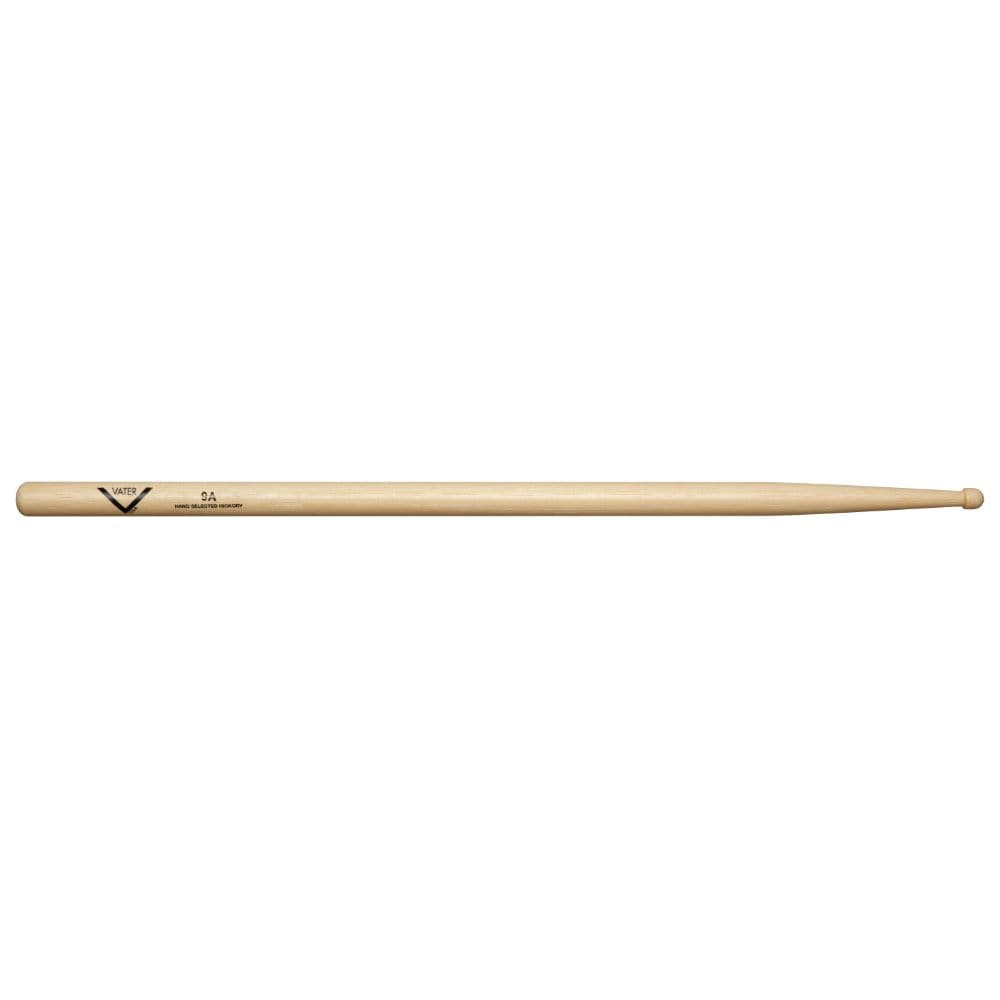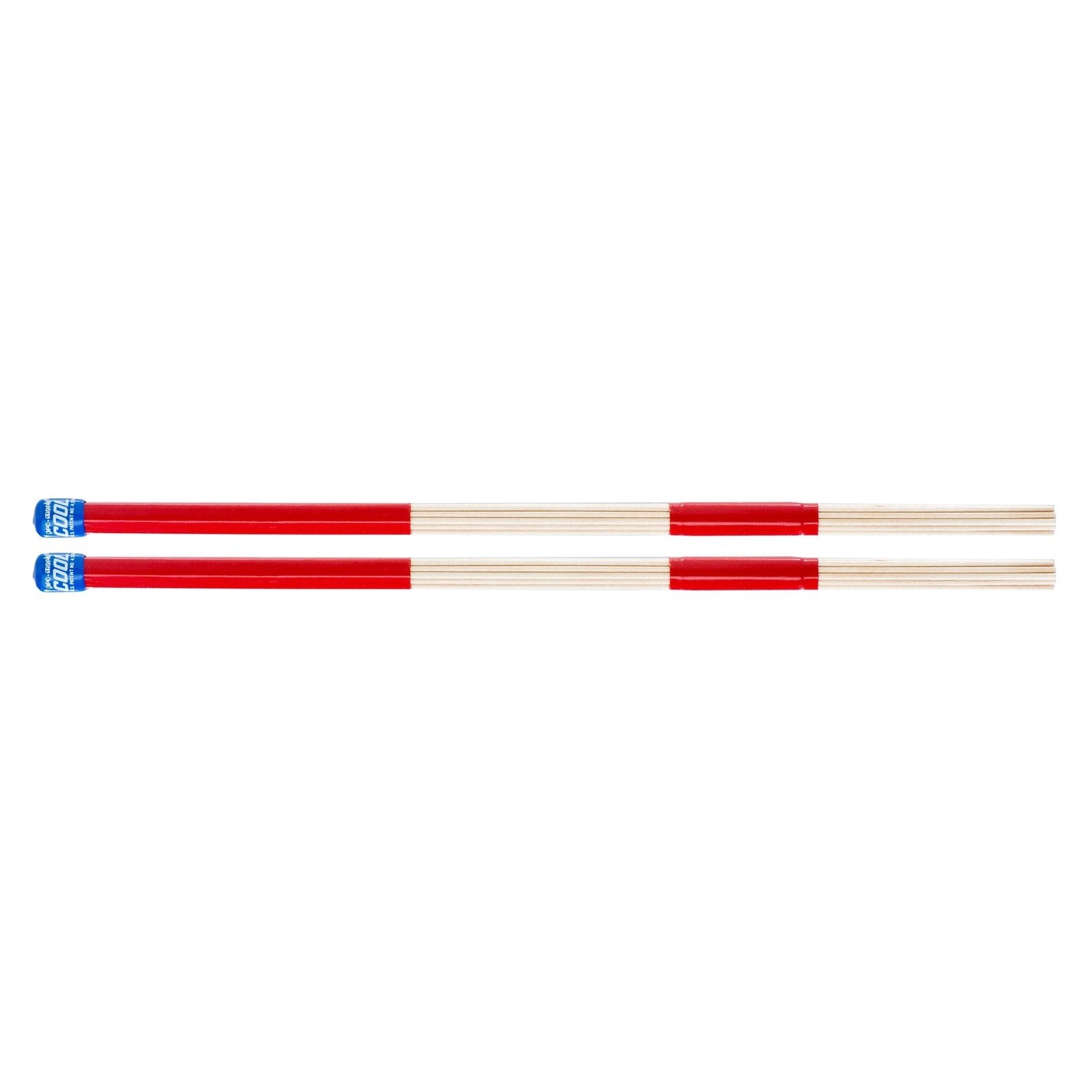Would Van Gogh be the artist we know and love today if he had used crayons? Would the drum break in In the Air Tonight be as impactful if Phil Collins had use tree branches? Not likely, right? If our tubs are the canvas we paint on, then our drum sticks are our brushes. Paired with a crisp snare, a quality drum stick can do a lot for the clarity, warmth, and feel of your sound. Every drummer prefers different stick sizes and types, but there are always a few stand-out models that work for almost everyone. Here at Drum Center of Portsmouth, we want to connect every drummer with great sticks that feel and sound excellent. That’s why we’ve put together this guide to the best drum sticks of 2022. Let’s rock!
1. Vic Firth American Classic Drum Stick 5A – Best Drum Sticks for Beginners
PROS
- Best all-around option
- Medium-high durability
- Good for drummers of all skill levels
CONS
- Not suitable for very heavy drumming
- May not be specialized enough for advanced players
Specifications
- Length: 16”
- Diameter: 0.565”
- Tip shape: teardrop
- Taper: medium
- Material: Hickory (including tip)
2. Vater Mike Johnston 2451 Hickory – Best Drum Sticks for Hard Rockers

PROS
- Barrel tip gives more ride cymbal definition
- Suited for heavier playing without sacrificing precision
- Great for live performances
CONS
- Thickness and weight make them slightly too big for use in light and fast playing
- Some find size can be uncomfortable
- Tips may wear down relatively quickly with hard playing
Specifications
- Length: 16”
- Diameter: 0.580”
- Tip shape: barrel
- Taper: medium
- Material: Hickory (sugar maple option available)
3. Promark Hot Rods – Best Drum Sticks for Acoustic Sets

PROS
- Designed for low-volume settings
- Comfortable and easy to use
- Warm, consistent sound
CONS
- More expensive than other single-pair sticks
- Playing cross stick not possible due to shape
Specifications
- Length: 16”
- Diameter: 0.550”
- Tip shape: other
- Taper: n/a
- Material: Birch
What to Consider When Buying Drum Sticks?
Not all drum sticks are the same. It’s important to choose the right sized sticks and the right type for your style of playing. Before we get into the details, it’s important to know that everyone has different preferences when it comes to drum sticks. Use whatever size and type feel best to you – there are no rules saying what you can and can’t use! If you need a little help picking out your sticks, you can always give us a call. Drum Center of Portsmouth experts will help you figure out what pair may suit you best.
Sizing
There are three components of drum stick sizing: weight, diameter, and length. What size you get will depend on your style of playing and your individual preference. You might think length depends on your hand size, but it’s really more about the feel. Shorter sticks will feel stiffer, while longer ones give you more bounce and flexibility. Weight and diameter are represented by that number-and-letter combination you often see in the name or product description. It’s a little complicated, but each manufacturer gives a different meaning to the numbers and letters. Some will use the numbers to describe the weight or the circumference of the stick tip. Some will use the numbers to describe thickness or even what musical setting they work best in. In general, light and thin sticks work best for light and fast playing, like in jazz. Heavier, thicker sticks are used for hard rock and metal. Of course, make sure you check the product specs of each pair before buying – that way you know exactly what size you’re getting.
Materials
Drum stick makers use tons of different materials for their creations. Wood, metal, plastic, rubber, carbon fiber – you name it, someone has made a stick out of it. Each material produces a different sound, has a different feel, and boasts a different level of durability. Hickory is the most common stick material. It’s incredibly versatile and pretty durable, too. Hickory sticks are best for beginners or those exploring different playing styles. Oak is very durable and shock-absorbent, but oaks tend to take some experience to handle. Maple is springy and light. That makes it nice for jazz but not well suited for heavier playing. Non-wood sticks certainly have their applications, but they tend to cost more than wood. Overall, those looking for a dependable and versatile everyday stick can easily rely on wood.
Frequently Asked Questions
How do I know when I’m ready to buy drum sticks?
Well, did you break your last pair recently? If so, you probably need some new ones! Actually, it’s always a good idea for any drummer to have multiple pairs of drum sticks in their kit. As you practice, you’ll come to prefer different sticks for each genre you play. Having a variety means you can experiment and figure out what works best for you. So, if you’re wanting to try something new or just feel like your current sticks don’t “feel” right, then it’s time to pick up a new pair.
How much should I expect to spend?
Drum stick prices vary according to material and craftsmanship. Some cheaper options may wear out faster, so you’ll have to replace them more often. Individual pairs can run between $3 and $25. They can also come in packs of 10 or 20, often from $15 to $30. Non-wood types can vary wildly in price depending on the material and durability, so they should be assessed on a case-by-case basis.
Bottom Line
As drummers, we spend a lot of time putting together the right kit – so don’t leave your drum sticks out of the equation! If you have any questions about selecting drum sticks, don’t hesitate to contact us! Our goal here at Drum Center of Portsmouth is to get you set up with the tools you need to make great music. We can give you more information and help you pick out a pair or two. Visit our blog for helpful reviews about specific drum products and parts. Or just give us a call at (603) 319-8109 or swing by our store.


